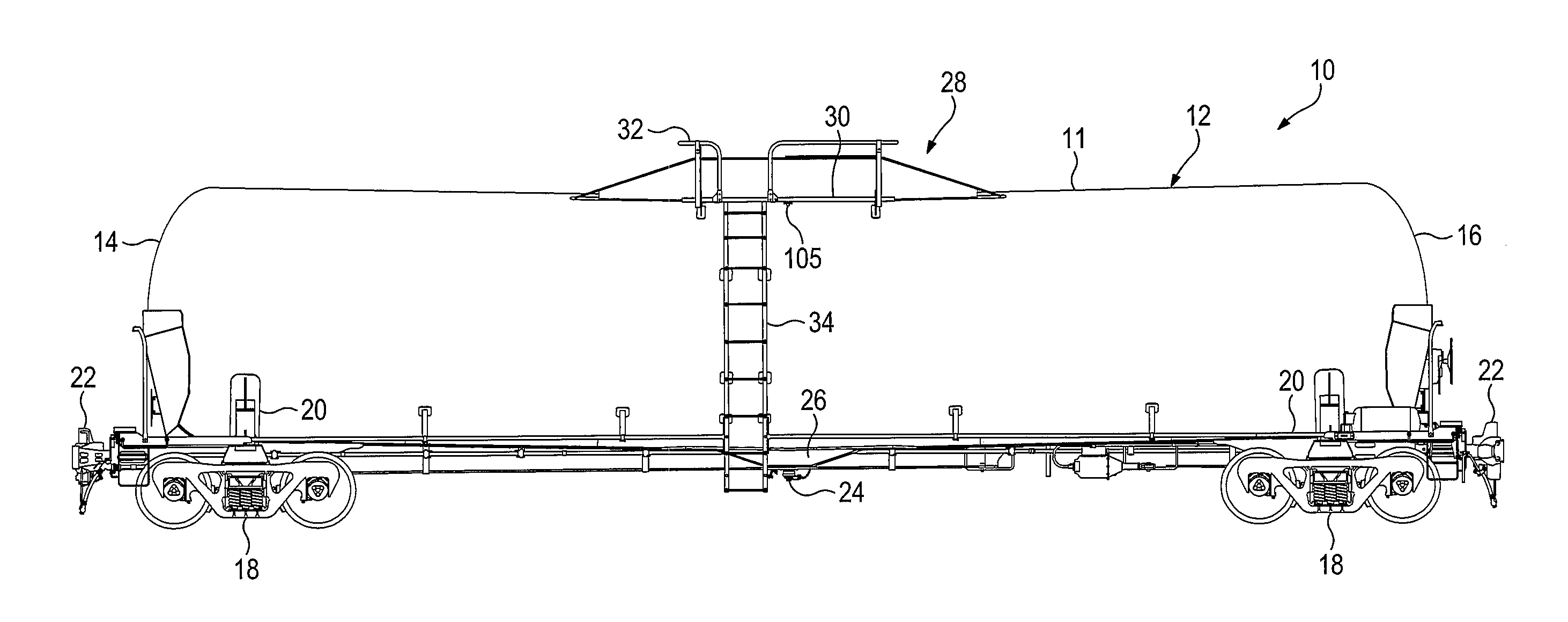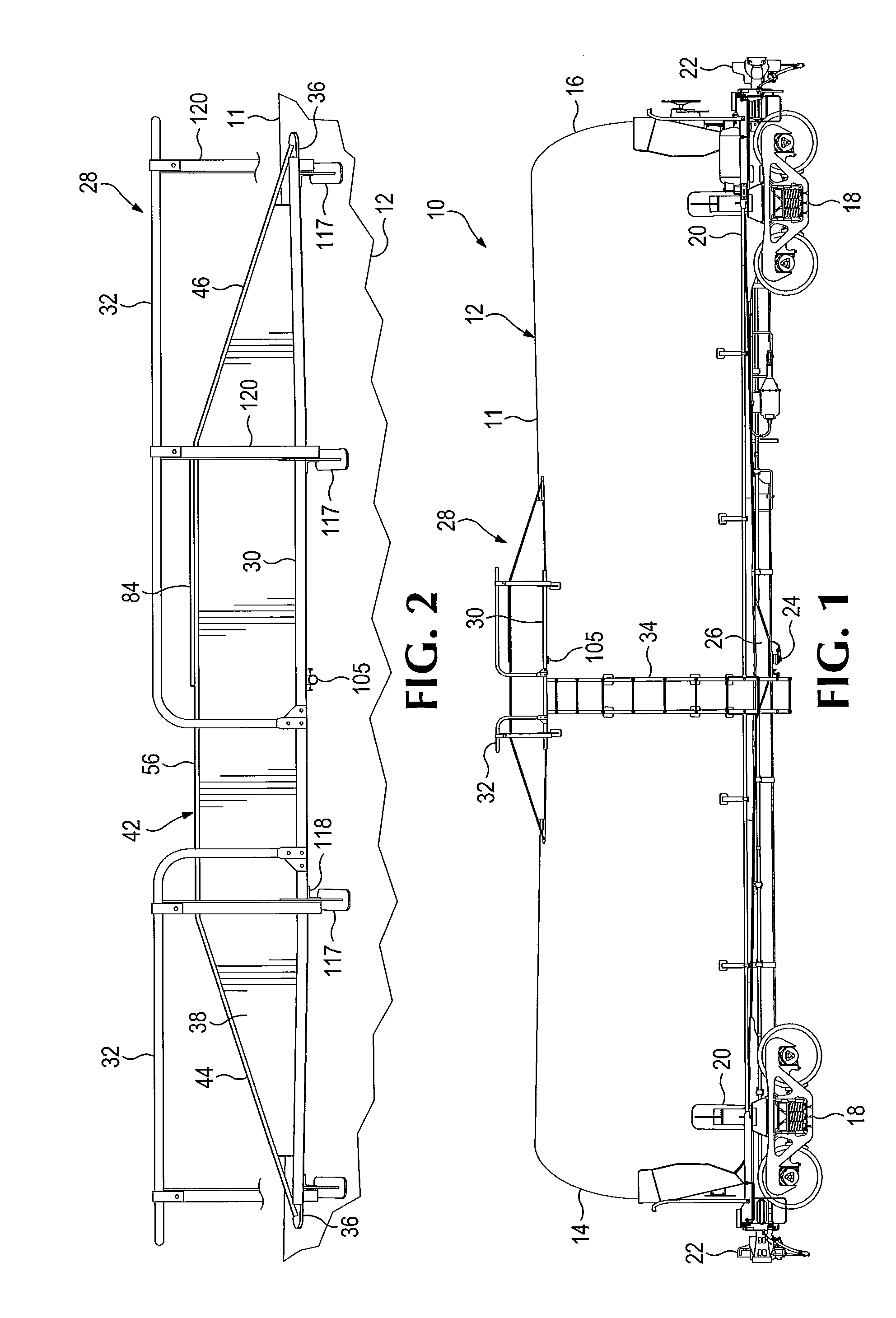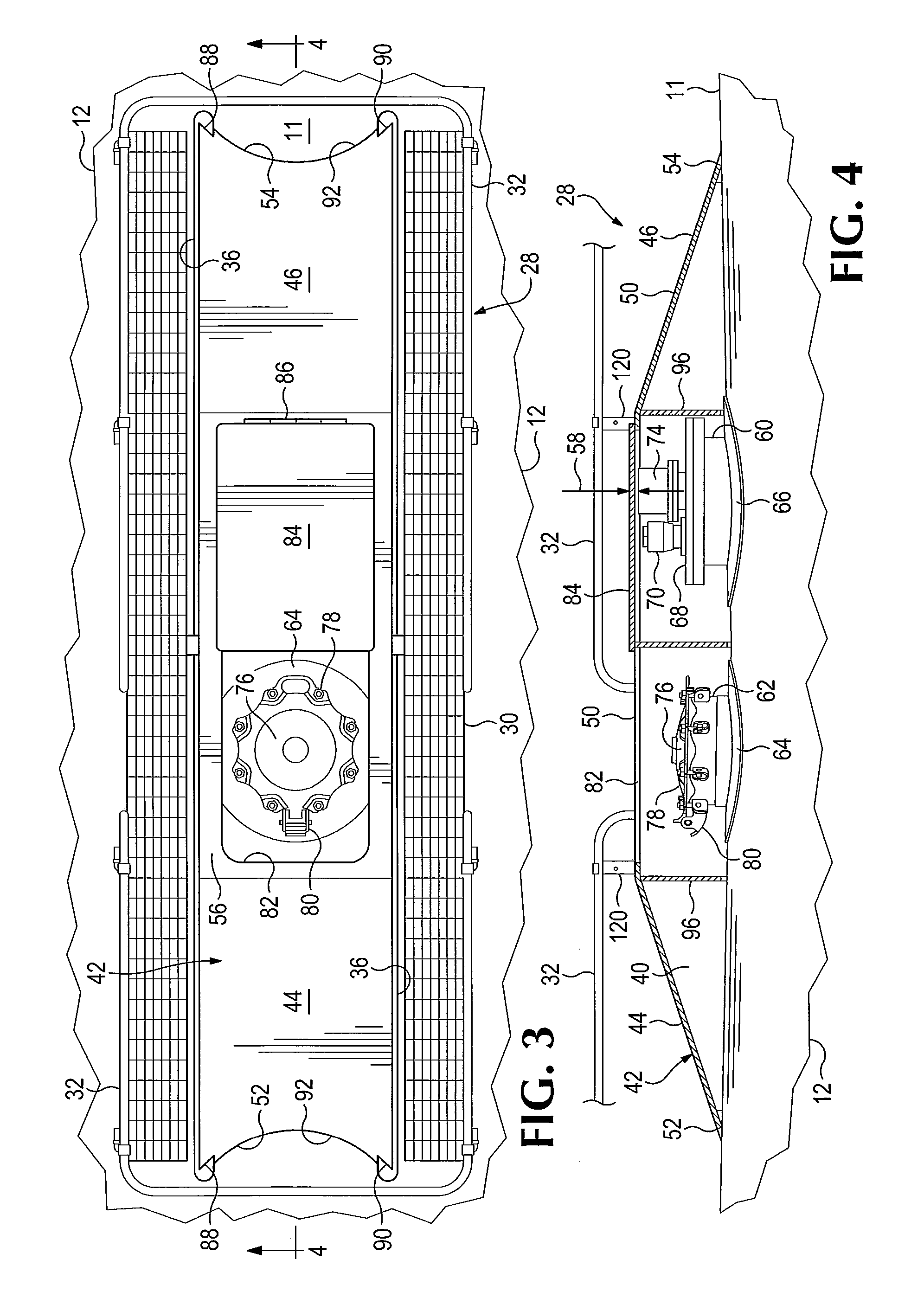Protective structure for top of tank car
a protective structure and tank car technology, applied in the field of railway tank cars, can solve the problems of nozzles susceptible to being broken loose, protective structures have failed, valves can be broken, etc., and achieve the effect of ample strength and significant fuel consumption
- Summary
- Abstract
- Description
- Claims
- Application Information
AI Technical Summary
Benefits of technology
Problems solved by technology
Method used
Image
Examples
Embodiment Construction
[0021]Referring now to the drawings which form a part of the disclosure herein, in FIG. 1 a railroad tank car 10 has a generally cylindrical cargo tank 12 whose opposite ends 14, 16 are supported by a pair of wheeled trucks 18. The wheeled trucks 18 may be attached to the cargo tank by appropriate conventional saddles and bolsters 20 connected with an outer surface of the cargo tank 12, but the cargo tank itself is constructed in most such railroad tank cars with significant enough rigidity and strength not only to be self supporting, but to bear the longitudinal train loads exerted on the tank car 10 during travel. A conventional double shelf coupler 22 may be provided at each end of the car. Centrally located in the bottom of the cargo tank there may be a bottom outlet valve 24 and related valve operating mechanisms associated with which there may be conventional protective structures 26.
[0022]Also located about mid-length of the car 10 and centrally along the top of its cargo tan...
PUM
 Login to View More
Login to View More Abstract
Description
Claims
Application Information
 Login to View More
Login to View More - R&D Engineer
- R&D Manager
- IP Professional
- Industry Leading Data Capabilities
- Powerful AI technology
- Patent DNA Extraction
Browse by: Latest US Patents, China's latest patents, Technical Efficacy Thesaurus, Application Domain, Technology Topic, Popular Technical Reports.
© 2024 PatSnap. All rights reserved.Legal|Privacy policy|Modern Slavery Act Transparency Statement|Sitemap|About US| Contact US: help@patsnap.com










